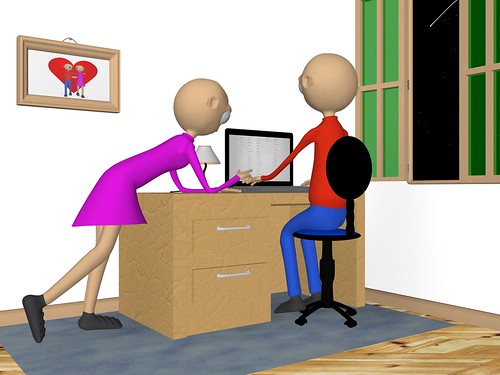
Over the past millennium, great technological advances have been made, from the Renaissance, to the industrial age, up to today's computer era. Although many different fields have been affected by this progression, one particular line of business that stands out is that of forensics. The science of bringing criminals to justice has been greatly augmented by a variety of new ways. Perhaps the most interesting of these advances is that of DNA fingerprinting. DNA fingerprinting has been used to prove or disprove the guilt of defendants in court. Although it is mainly used in court, new organizations are now using DNA to free previously wrongly convicted inmates.
DNA is one of the different acids found in the nuclei of our body cells. It receives its name from Ribose, a sugar that makes up DNA. It contains the blueprint for our bodies, and some of the code encrypted in our DNA can distinguish us as a person. This bit of individual traits in our genetic blueprint is, however, very small. In fact, we actually share approximately 40% of our DNA with a banana. The small percentage of our DNA that does differentiate us can be used as a sort of identification tag, similar to a fingerprint or a license plate. DNA fingerprinting was discovered in September 1984, when Professor Sir Alex Jeffreys made the first DNA fingerprint at Leicester University in England. Since then, DNA profiling has been used in a variety of applications, such as tracking down our early ancestors by using the code in our DNA.
As with normal fingerprints, governments around the world have built a database of DNA fingerprints since the late 1980s. DNA often is found on the crime scene in the form of bodily fluids, such as blood. Using these samples, DNA can be compared in a laboratory using gel electrophoresis, which uses a magnetic field to separate the strands of DNA. Unfortunately, especially in the early history of DNA fingerprinting, mistakes were often made. It is estimated that one tenth of a percent of DNA comparisons are incorrectly done. This may not seem like a lot, but considering that there are more than one million felony convictions a year in America, 0.001 of this total amounts to 1,000 people!
In the early years of DNA fingerprinting, many defendants were falsely convicted in court trials on the basis of erroneously used DNA. Now, almost two decades later, these questioned cases are being reviewed again. Now, new organizations are employing the same technology, previously used 20 years ago to convict defendants, to exonerate them. One particular project that is actively freeing the wrongly accused is known as the "Innocence Project." The Innocence Project is a nonprofit organization that uses a DNA database they have acquired to revisit botched cases and bring new evidence to court. To date, they have exonerated 225 prisoners.
One particular success story regarding the Innocence Project is that of Michael Blair. In 1994, Blair was convicted of murder based on faulty DNA evidence. He was sentenced to death. For nearly 14 years, Blair remained on death row, until the Innocence Project used DNA fingerprinting to prove his innocence. Blair was exonerated by the state of Texas and awaits compensation.
DNA identification can now be used as a tool of freedom as opposed to incarceration. However, DNA fingerprinting remains a double-edged knife. As the Innocence Project is continually freeing inmates and proving their innocence, it is clear that many more prisoners are undoubtedly waiting to have such an organization look back into their own conviction and deliver justice to them.
Source Citation
Akay, Haluk. "Exonerating the innocent: using DNA to free wrongly convicted inmates." Creative Kids Fall 2010: 8+. General OneFile. Web. 13 Oct. 2010.
Document URL
http://find.galegroup.com/gps/infomark.do?&contentSet=IAC-Documents&type=retrieve&tabID=T003&prodId=IPS&docId=A238178042&source=gale&srcprod=ITOF&userGroupName=18551_mcpls&version=1.0
Gale Document Number:A238178042


No comments:
Post a Comment